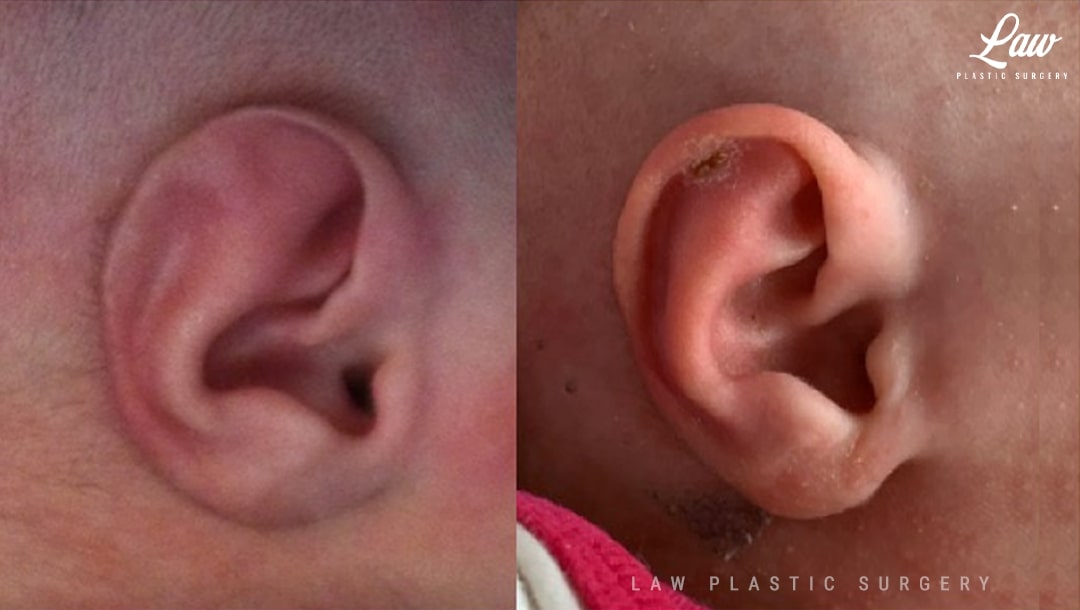Ear Molding Before & After Photos
What is Ear Molding?
Ear molding is a way to gently reshape an infant’s ears while the cartilage is pliable. There are no incisions nor injections.
What are Common Ear Deformities?
There are a wide variety of ear shapes. Some commonly-treated presentations include prominent ears, constricted ears, lidding, Stahl’s ear, lidding, and cupping.
What Causes Ear Deformities?
Many deformities are due to pressure on the ear while in the uterus, or shortly after birth. Other times there is an interruption in the blood flow or normal development of the ear. Some may be due to exposure to drugs or medications; others are genetically passed on from the parents to the child.
Why Perform Ear Molding?
Ear molding is a way to gently reshape an infant’s ears while the cartilage is pliable. Molding the cartilage before it becomes more firm can sometimes provide enough correction to prevent any need for surgery in the future. The shape and contour often is smoother and more natural in appearance than with surgery as well. If surgery is required, the amount of surgery is lessened, and the final result is also improved.
How Do You Treat Ear Deformities?
The hair is trimmed around the ear, to allow a cradle to adhere to the skin. This base comes in different sizes, and is selected and modified as needed to custom fit each ear. There is a soft bar behind the ear which helps create and position the naturally-occurring fold. Small pieces are chosen and fashioned to achieve the desired effect. These may be further secured or augmented with gentle taping. A lid is placed over these pieces to help secure their placement. You can see through the lid to make sure the pieces are in good position, and that the inside is clean and dry. The ear canal is carefully left open and unobstructed to not affect hearing.
The system used is the EarWell device. You may visit their homepage, and specifically the page for parents here for more information.
Ear Molding Frequently Asked Questions
How long does treatment take?
What are the risks of treatment?
What if we do not do anything?
Will insurance cover treatment?
Is this just cosmetic?
Consultation
I am available at some hospitals in the region to begin treatment while still in the hospital. Beginning therapy in the hospital is helpful for children requiring a longer admission after birth (including for premature babies).
Please feel free to call my office at 972-331-1900 to schedule a consultation via video if you have any questions.
Ear Molding Before & After Photos
Related Procedures





